
Program: EPD Australasia — www.epd-australasia.com
Program Operator: EPD Australasia
EPD Registration Number: S-P-03582
Publication date: 17.07.2023 Valid until: 17.07.2028




Program: EPD Australasia — www.epd-australasia.com
Program Operator: EPD Australasia
EPD Registration Number: S-P-03582
Publication date: 17.07.2023 Valid until: 17.07.2028



James Hardie understands building professionals, and serves them with innovative building products and solutions. As an industry leading manufacturer of fibre cement products, James Hardie empowers its people to innovate and capitalise on the company’s global scale. As a trusted industry leader, James Hardie is committed to transforming the way the world builds through innovative, durable, and more sustainable solutions.
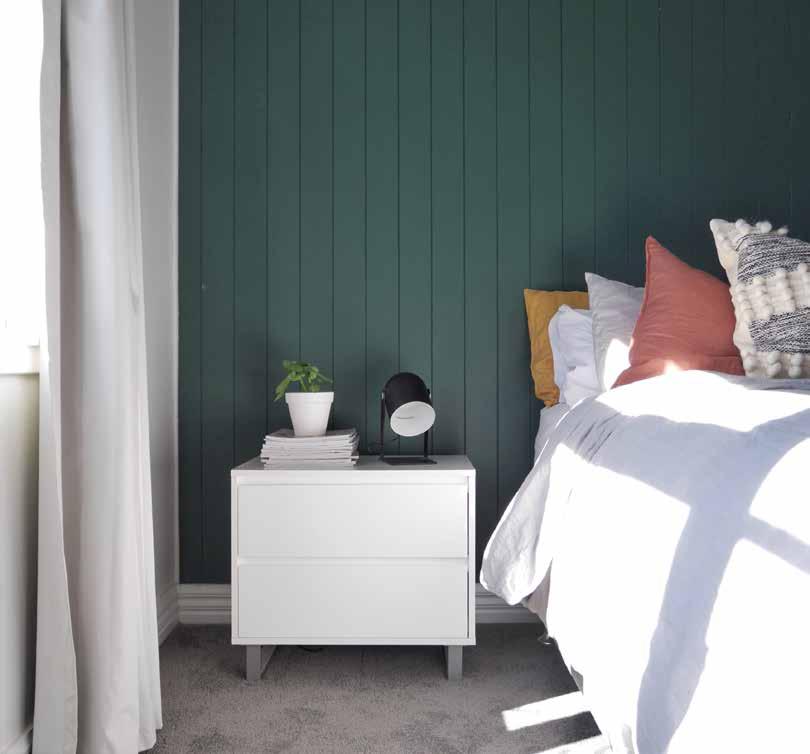
Always driven to find a better way to build, James Hardie applies a continuous improvement mindset to research and development, manufacturing, and sales. Our sustainability efforts are no different, with manufacturing waste, water usage and energy being a major focus of our sustainability improvements. James Hardie helps inspire and deliver beautifully designed homes and buildings that are durable, functional, and easy to build.
James Hardie’s innovative and durable solutions combine lasting beauty and endless design possibilities with trusted protection and low maintenance. Key to this effort is James Hardie’s drive to develop quality solutions that are built to last, improving the liveability and streetscape for homeowners and communities alike.

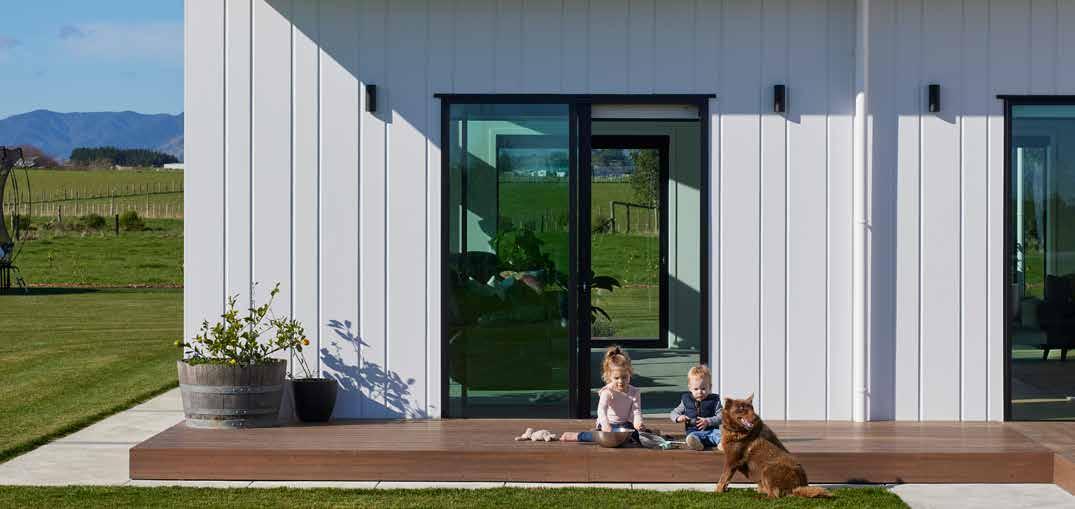
Our Sustainability Strategy was formalised in FY21 and is integrated with our Global Strategy for Value Creation and Operational Performance. It focusses on four key pillars of Communities, Environment, Innovation and Zero Harm.
Embedded in a foundation of Zero Harm*, James Hardie’s approach to sustainability puts people first with a focus on safety. Investing in a culture of safety strives to ensure our employees and business partners get home safely to their families, every day.
James Hardie’s disciplined approach to lean Manufacturing delivers both strong operational and sustainability performance through cutting down on waste and inefficiencies. From cultivating teamwork and empowerment in our people to resource conservation and waste reduction in our processes including water usage and production waste, James Hardie helps build better homes, with less. This in turn enables James Hardie continues to develop products that support sustainable and thriving communities around the globe.
During the fiscal year 2021, we continued our relentless drive to improve our ESG processes and practices such as eliminating coal from our Carole park facility and saving over 10 million cubic feet of water in Australia over a four year period. In doing so, we have made significant progress on our sustainability reporting journey.
James Hardie is leading transformation to deliver greater value to our consumers and the community. Our global strategy for value creation embeds the sustainability principles and practices that inform our Environmental, Social and Governance (ESG) strategy.

The leadership position we earn within the New Zealand market every day extends to our sustainability objectives and our aim to be a leader in sustainability performance and reporting:

We deliver long-term value through our high-quality, built-to-last products
Lean Manufacturing promotes resource conservation and waste reduction.
Product design and innovation considers sustainability-related impacts and ongoing enhancements. Our lightweight building products are designed to be durable and easy to install, helping to create resilient communities and withstanding variety of harsh climates.
We understand our role in building sustainable local communities where we operate. Our operations support local communities, employ locally, and to the extent possible, source locally, supply locally and give locally.
Our people are at the heart of all we do. Fostering of engagement and a culture in which people can thrive promotes shared success in sustainability initiatives.
The Zero Harm foundation prioritises the safety of our products and employees, partners, customers and communities.
In the coming years, we will continue to develop our sustainability strategy and define the next steps in our ESG journey. Future areas of advancement include improving the quality of our sustainability reporting and Carbon Disclosure Project (CDP) submission using recognised frameworks (GRI Standards, SASB Sustainability Accounting Standards and TCFD recommendations), growing our internal ESG team, strengthening systems, setting targets in reducing our environmental footprints and planning initiatives to meet our goals and reduce our impact on climate change.
James Hardie uses recognised standards and methods as the basis for communicating relative environmental credentials with clients and stakeholders. James Hardie understands its role in providing standardised, trusted, and comprehensive data and information.
James Hardie was an early adopter of Life Cycle Analysis (LCA) with a first LCA completed in 1999. We believe this leadership position and transparency will not only set an example for industry, but also help all building professionals make better and more informed choices.
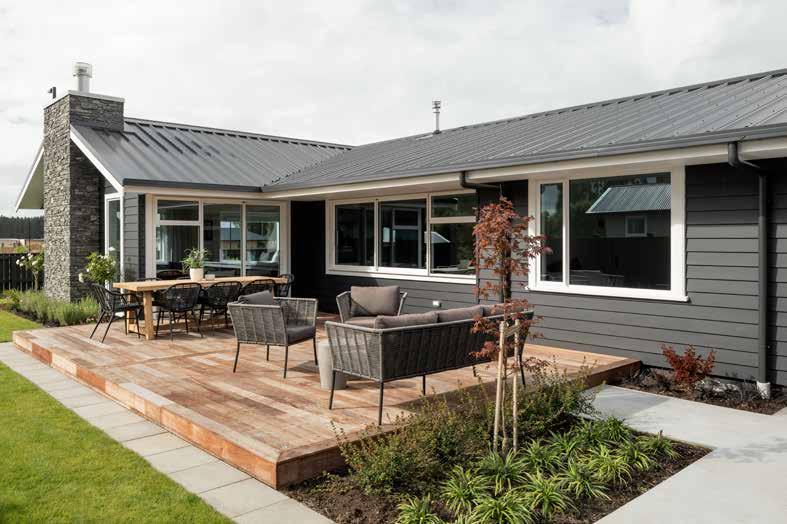
James Hardie has decided to adopt the Global Reporting Initiatives (GRI) framework. The GRI framework will produce a framework to report on material topics, their relative impacts and how they are managed, and is the one of the most widely adopted framework for Environmental, Social and Governance reporting.
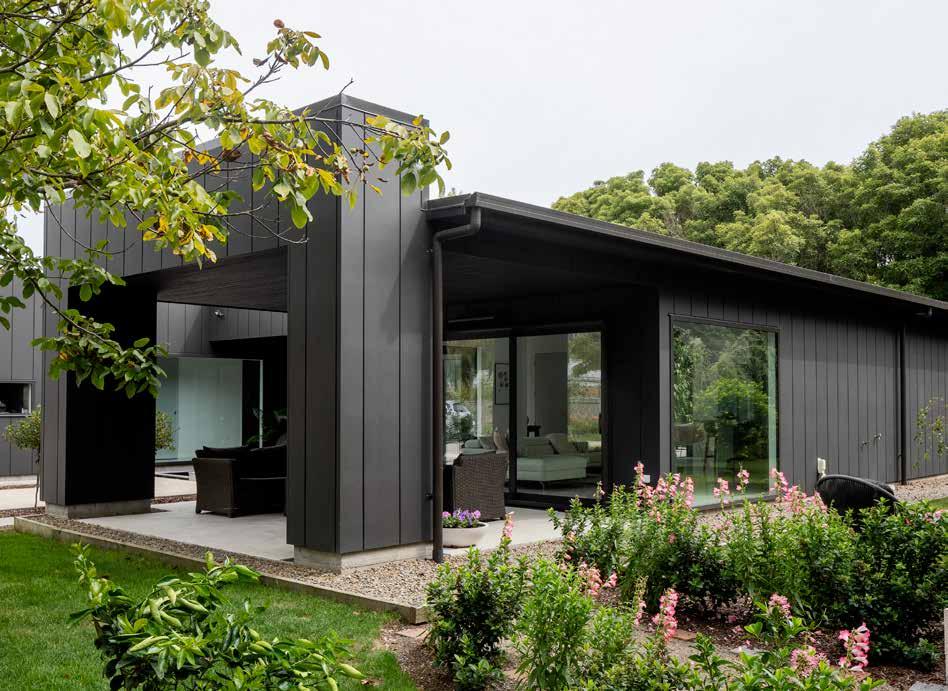
James Hardie understands building professionals and homeowners alike, providing them with innovative, sustainable building products and solutions built for tough New Zealand conditions.
Sustainable, trusted protection
James Hardie continulously strives to be more transparent in it’s supply chain by reporting via the EPD, enabling customers to truly understand the impact of using our products. By specifying our products, you can take comfort in knowing that James Hardie delivers low-maintenance and highly durable materials.
Key Benefits of Hardie™ fibre cement products*






Warranty
James Hardie’s products are backed by Warranties. Refer to Product Specific Warranties, available at jameshardie.co.nz, for further details.

Flex Sheet
Hardie™ Flex Sheets are 6mm thick natural, un-sanded sheets used to achieve a traditional panel look in external cladding applications.
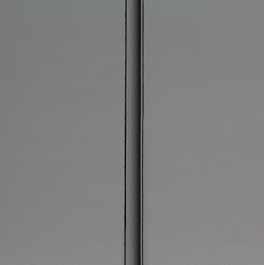
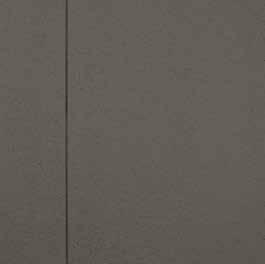
Hardie™ Flex Eaves Lining
Hardie™ Flex Eaves Lining are a 4.5mm thick, square edge sheet produced in a range of sheet sizes to accommodate both wide and narrow soffits.
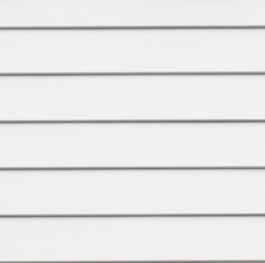
EasyLap™ Panel
EasyLap™ Panel is a 9mm thick, preprimed fibre cement sheet with a shiplap joint along its two vertical edges. Can be finished with paint, texture or battens.
Hardie™ Plank Weatherboard
Hardie™ Plank Weatherboard is a no-fuss, 7.5mm thick fibre cement weatherboard, perfect for cost-effective home extensions, renovations or full cladding on new builds.

ExoTec™ Façade Panel
ExoTec™ Façade Panel is a 9mm thick, high density fibre cement sheet, suitable for low rise andhigh rise commercial building facades, fascia’s and soffits.
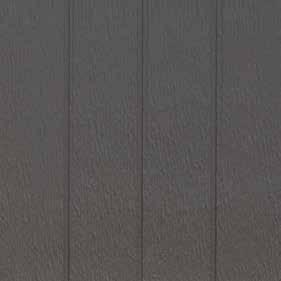
Axon™ Panel
Axon™ Panel is a range of 9mm thick vertically grooved panels. Easy to install, robust and versatile, Axon™ Panel is a clever alternative to traditional vertical shiplap weatherboards.

RAB™ Board
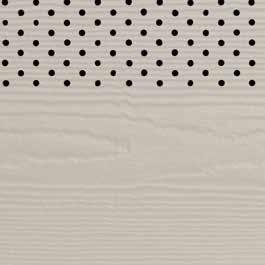
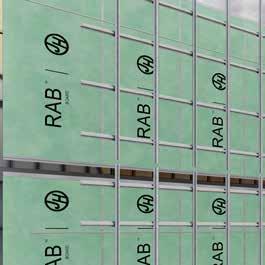
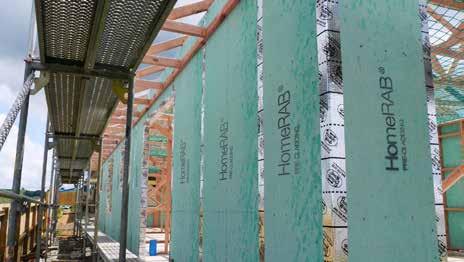
RAB™ Board
Is an all in one bracing, airtight and fire resistant rigid air barrier available in 6 or 9mm. The inherent strength of RAB™ Board makes it an ideal product for use in shear wall design in residential or commercial specific design projects. Identifiable by the green water repellent sealer to keep moisture out.
HomeRAB™ Pre-cladding
HomeRAB™ Pre-cladding
HomeRAB™ Pre-Cladding is a costeffective, 4.5mm thick fibre cement rigid air barrier. For use in residential builds to provide resistance to gusting wind to reduce draughts and identifiable by the green water repellent sealer to keep moisture out.
Interior Flooring
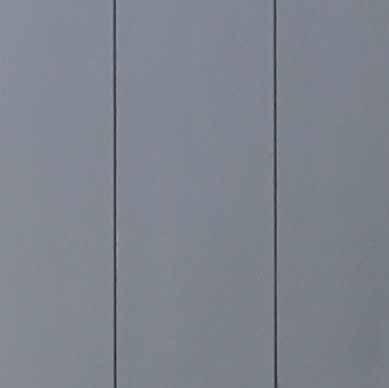


Secura™ Interior Flooring
Secura™ Interior Flooring is a 19mm thick high performance structural floor, offering the robust feel of concrete with the speed of timber installation. It’s engineered to address the complete range of performance needs for residential and light commercial floors.
Villaboard™ Lining

Villaboard™ Lining
Villaboard™ Lining is a highperformance fibre cement board that creates a seamless flat surface which can be painted, wallpapered or tiled to provide a variety of looks. Available in 6mm or 9mm it can also be used externally on eaves and soffits.
Ceramic Tile Underlay
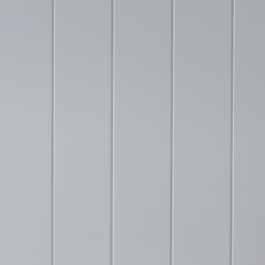
Ceramic Tile Underlay
A 6mm thick smooth, stable internal underlay for laying tiles, slate and vinyl over existing or new flooring. It minimises tile movement and potential tile cracking caused by the expansion and contraction of wood-based flooring substrates.
Groove Lining
Hardie™ Groove Lining
Hardie™ Groove Lining is a 7.5mm thick, tongue and groove sheet with the durability of fibre cement. It can also be used externally on eaves and soffits.
Globally, the construction industry faces a number of challenges, with buildings and construction accounting for nearly 40 percent of energy-related carbon dioxide (CO2 ) emissions and have significant impact on our natural habitats. Carbon emissions, commonly referred to as embodied carbon, are released not only during operational life but also during the manufacturing, transportation, construction and end of life phases of all built assets – buildings and infrastructure.
According to the World Green Building Council, embodied carbon in buildings contributes around 11 percent of all global carbon emissions. The remaining 29 percent results from the energy used to power, light, cool and heat buildings during use - also known as operational carbon. During the operation phase, fibre cement products capture CO2 from the environment.The graphic to the right highlights the phases where embodied and operational carbon are released.

There are several major challenges for industry to be able to deliver buildings with lower life cycle carbon and environmental impacts, healthier environments for the occupants, ethical labour practices in supply chains and resilience against extreme weather events.
At James Hardie, we are committed to reducing environmental impacts and believe leading a disciplined approach to Lean Manufacturing helps us build better homes, with less. Our lightweight construction systems consist of lean pre-fabricated materials, engineered to be energy and resource efficient in their manufacture. James Hardie’s product design and innovation considers sustainability related impacts and ongoing enhancements that deliver lasting beauty and endless design possibilities.
James Hardie can assist with ensuring minimal on-site wastage by helping designers, architects and builders optimise sheet layout and designs for maximum coverage and minimum wastage. James Hardie’s Lean Manufacturing promotes resource conservation and waste reduction, providing building professionals and homeowners with the trusted protection and low maintenance they need, whilst reducing the environmental impact of their builds.
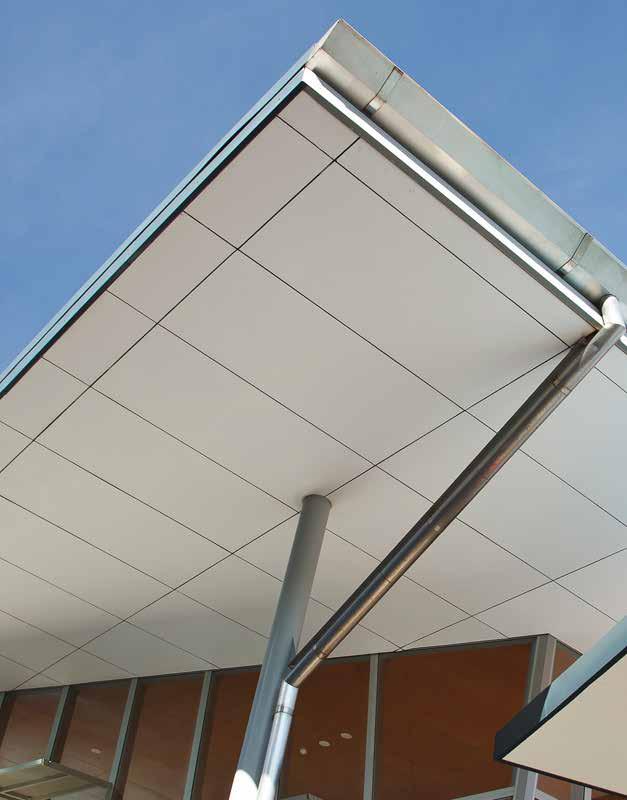

James Hardie’s role in providing trusted and comprehensive data and information
As an industry leader in the production of fibre cement building solutions, James Hardie understands its role in providing trusted, and comprehensive data and information in an easy and accessible format.
Research shows that our lightweight and durable products often have significant advantages and contribute to a resilient built environment. To deliver buildings with healthier
environments for the occupants, James Hardie strives for continual improvements to manufacturing processes to reduce the environmental impact of our products over their full life cycle.
James Hardie is committed to working with architects, builders, and homeowners to assist them in arriving at bespoke solutions that meet both their environmental and design needs.
At James Hardie we believe this leadership position and transparency will not only set an example for industry, but also help all building professionals and homeowners make better and more informed decisions.
James Hardie’s credentials, information and transparency can be used to obtain credit points under NZGBCA’s Green Star rating tools for both residential and commercial projects, specifically relevant to the Life Cycle Impacts and Responsible Building Materials credits.
Green Star is the most commonly applied voluntary green building rating scheme in Australia and New Zealand. It was created by the Green Building Council of Australia (GBCA) and adapted for use in New Zealand by the New Zealand Green Building Council (NZGBC). The rating tool can be used for every type of commercial project across New Zealand, with differing scoring systems across the various rating tools (Green Star Buildings, Design and As Built and Interiors). Each tool consists of a number of mandatory minimum requirements and optional credits.
Once all the mandatory minimum requirements are met, you can then choose any other combination of credits to reach the points required for the rating being targeted.
The building needs at least 45 points to achieve a 4 Green Star rating, which is the minimum standard that can be certified and is deemed Good Practice. A 5 Green Star rated building is deemed New Zealand Excellence. A 6 Green Star building exemplifies world leadership.
Homestar is an independent rating tool developed by the New Zealand Green Building Council (NZGBC) in 2010 to assess the health, efficiency and Sustainability of homes across New Zealand.
The Homestar system rates a homes performance and environmental impact against the current building standards set by the New Zealand building code.
The homestar system uses an accumulating points system across four categories; Efficiency, Healthy and Comfortable, Liveable, Environmentally Responsible. Each category has set criteria which a project can meet to gain points up to a category maximum.
James Hardie’s Fibre cement products and EPD documents contribute to Homestar ratings gaining points though;
Compliance with EN3: Sustainable Materials:
• A product specific EPD contrite 1.25 points towards a maximum of 10 points in this category maximum. Product specific EPD’s to qualify for these points mush be issued in conformance with ISO 14025 or EN15804, be independently verified and be based on a cradle-to-gate scope as a minimum.
For more information about Green Star and Homestar rating schemes please refer to the NZGBCA website https://www.nzgbc.org.nz/
Program information
Program: EPD Australasia
315a Hardy Street Nelson 7010
New Zealand
w: www.epd-australasia.com
e: info@epd-australasia.com
CEN standard EN 15804 serves as the Core
Product Category Rules (PCR)
Product category rules (PCR): PCR 2019:14
Construction products (EN 15804+A2) (1.11); UN
CPC Code: 37570, 2021-02-05, ANZSIC 2031
PCR review was conducted by:
The Technical Committee of the International EPD® System.
Moderator: Martin Erlandsson, IVL Swedish Environmental Research Institute,
e: martin.erlandsson@ivl.se
Independent third-party verification of the declaration and data, according to ISO 14025:2006:
EPD process certification ✔ EPD verification
Third party verifier
Joana Almeida

In case of recognised individual verifiers: Approved by:
The EPD owner has the sole ownership, liability, and responsibility for the EPD.
EPDs within the same product category but from different programmes may not be comparable. EPDs of construction products may not be comparable if they do not comply with EN 15804. For further information about comparability, see EN 15804 and ISO 14025.
Owner of the EPD
Company information EPD Australasia Ltd
Procedure for follow-up of data during EPD validity involves third party verifier:
Yes ✔ No
EPD type: Manufacturer-specific EPD
James Hardie Australia Pty Ltd
Headquarters
10 Colquhoun Street Rosehill NSW 2124
Contact Person: Mat Skembes - Head of Environmental, Social and Governance APAC
Manufacturing locations
Rosehill
10 Colquhoun Street Rosehill NSW 2124, Australia
Carole Park
Cobalt St, Carole Park QLD 4300, Australia
Contact information
James Hardie Australia Pty Ltd
10 Colquhoun Street Rosehill NSW 2124
t: +61 13 11 03
f: +61 (2) 9638 9543
e: info@jameshardie.com.au w: jameshardie.com.au
EPD Produced by
Edge Environment Pty Ltd
Jonas Bengtsson, Xinyue Zhang L5, 39 East Esplanade, Manly NSW 2095 Australia
t: +61 (2) 9438 0100
e: info@edgeenvironment.com.au w: edgeenvironment.com.au
James Hardie’s LCA calculates the environmental footprint at each of the following stages: product, construction, use, and end-of-life. All the significant environmental impacts associated with the product, including the impact on water, air, land and climate change are reported based on international ISO LCA standards.
This product declaration is based on the report “James Hardie New Zealand EPD LCA Background Report” by Edge Environment Pty Ltd and verified by Joana Almeida. James Hardie products are developed for all environmental condition in New Zealand. In regions subject to freeze/thaw conditions, all James Hardie fibre cement external cladding must be installed and painted in the warmer months of the year where the temperature does not create freeze and thaw conditions or paint issues. The cladding must be painted immediately after installation. In addition, fibre cement cladding must not be in direct contact with snow and/or ice build up for extended periods, e.g. external walls in alpine regions subject to snow drifts over winter. Furthermore, a reputable paint manufacturer must be consulted in regards to a suitable product, specifications and warranty. For installation in coastal regions as well as cyclonic or high wind zones specific or additional fixings may be required. Please refer to the relevant James Hardie installation manual1 for required fixing and installation specifications. James Hardie products are manufactured in Australia. Full product properties are disclosed on the website. James Hardie provides specific installation guidance on the website1. Installation quality that is aligned with the guidance is expected for functional performance. It requires regular maintenance to get the full lifespan. Repainting every 10-15 years is assumed to be a good average. All details are included in the website and manual1.
TABLE 2 PRODUCT CHARACTERISTICS
Declared Unit
Product Characteristics
1 square metre of installed external cladding product over its reference service life (RSL).
System Boundary Cradle to gate with options, modules C1–C4, and module D with additional modules (A1-A3 + C + D and additional modules). The additional modules are A4-A5 and B1-B2.
Reference Service Life (RSL)
The fibre cement product life is assumed to be 50 years, except for Villaboard™ lining with a product life of 60 years.
Geographical Coverage New Zealand
Time Period Foreground was provided first-hand by James Hardie for CY21 (2021-01-01 to 2021-12-31)
Databases used Ecoinvent v3.8 (all background data is less than 10 years old)
Software SimaPro (v9.1.1.1)
FIGURE 1 SYSTEM DIAGRAM
Modules declared, geographical scope, share of specific data (in GWP-GHG indicator) and data variation:
The life cycle of a building product is divided into three process modules according to the General Program Instructions (GPI) and four information modules according to ISO 21930 and EN 15804 and supplemented by an optional information module on potential loads and benefits beyond the building life cycle, as given in following table.
Table 4 lists the main materials used to produce fibre cement. None of the products contain one or more substances that are listed in the “Candidate List of Substances of Very High Concern for authorisation”. According to the PCR 2019:14, if one or more substances of the “Candidate List of Substances of Very High Concern (SVHC) for authorisation” are present in a product and their total content exceeds 0.1% of the weight of the product, they need to be reported. Safety data sheets are available on https://www.jameshardie.co.nz/resources/ technical-literature. Biogenic carbon content in product is 0.035 - 0.055 kg C per kg product. No recycled materials included in packaging. Biogenic carbon content in accompanying packaging is 0 - 0.006 kg C per m2 product. It is assumed 500 g biogenic carbon in 1 kg of cellulose pulp and pallets. Hexavalent Chromium Cr (VI) (CAS 1333-82-0) can be present as a trace element in cement (<50ppm) however this value is diluted in finished fibre cement products as cement only makes up a portion of our raw materials.
2 Coatings are included in the model. Due to the data confidentiality, details are not reported here.
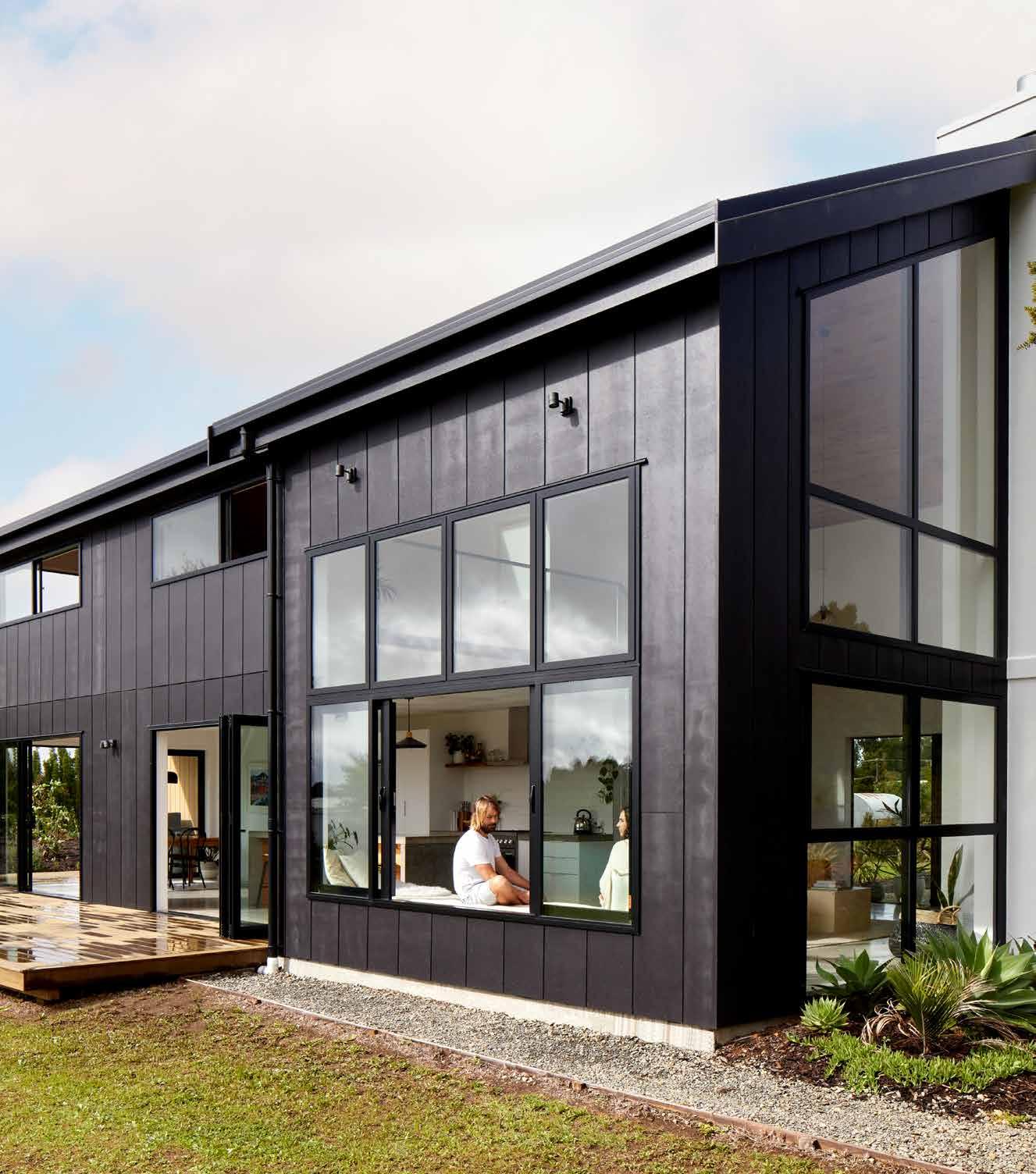
The inventory data collected from James Hardie for production year 2021 is available below. In summary, the panels are produced from:
• Cement, cellulose pulp, silica, hydrated alumina, sludge (from internal recycling) and water.
• Cement used in Rosehill manufacturing site sources from Boral. Boral has done an internal LCA study to quantify environmental impacts. In this study, carbon emission factor (0.872 kg CO2e/kg cement) is obtained from Boral directly. The Boral emission factor substituted the factors for impact category Climate change (GWPT), Climate change – Fossil (GWPF), and Global warming (GWP 100a) (GWP-GHG). The Boral GWP data is provided to James Hardie as a specific calculation for GWP in line with their recent EPD, since James Hardie’s cement is slightly different mix to their typical products. Other environmental performance values for cement were taken from AusLCI generic portland cement dataset since it is not available from Boral, which is a conservative approach.
• Scyon Stria and Scyon Linea production also uses a density modifier additive in addition to the above.
• Typical production process includes the use of energy (electricity, gas, diesel, etc.), flocculants, resins and steel balls.
• Energy consumption and water consumption were allocated to each product based on actuals consumption in CY 2021 and Standard Meter (STM, 1 STM is 4.5mm*1000mm*1000mm worth of material). Diesel consumption in Rosehill is forklifts fuel. Diesel consumption in Carol Park includes forklifts and boilers for autoclaves.
• The cellulose pulp is assumed to have 12.2 MJ/kg as renewable energy resource used as raw material, based on the energy density quoted for biomass municipal and industrial materials in the National Greenhouse Accounts Factors (Department of the Environment, 2021).
• Additional materials, including primers and paints, are based on Bill of Material (BOM) in CY 2021 and STM.
• Typical packaging, including gluts, pallet, slat, and lid, is based on BOM for Australia.
• Interleaver rates and reject sheet rates for CY 2021 have been applied to all the products.
Typical production process includes the use of energy (electricity, gas, diesel, etc.). Energy consumption was allocated to each product based on its portion of the overall yearly production (in STDM) for each production site. Electricity is modeled with the regional grid of each plant location.
The fibre cement manufacturing process produces a durable and workable product by a process that reduces the curing time compared to air-cured concrete products. James Hardie uses a mixture of cement, sand, water and cellulose fibre, sourced from sustainably-grown Pine trees. Small amounts of other chemical additives are used to help the process, or provide products with particular characteristics. This means that Fibre cement has our trusted level of durability, fire, impact and moisture resistance, and aren’t susceptible to rot or termites like conventional fibre panels. Figure 2 shows the manufacturing process
The GWP of the assumed electricity grid mix corresponding to the manufacturing locations in Queensland and New South Wales is given in the following table. Unit process retrieved from AusLCI, Carole Park: electricity, high voltage, Queensland/AU U; Rosehill: electricity, high voltage, New South Wales/AU.
Transport distances and loads from the James Hardie gate were calculated based on James Hardie’s annual state sales data for production year 2021. For modelling purposes, various conservative assumptions for inter-state and local distribution distances were made as follows:
• 3021 km sea transport from Australia to New Zealand
• 200 km additional regional distribution
The panel installed waste rates have been provided by James Hardie. The construction waste and packaging waste, including gluts, pallet, slat, and lid, were calculated based on waste rates.
The following assumptions have been used in this study to model panel construction:
• Energy (electricity) consumption for construction and deconstruction has been calculated based on the consumption of 0.2 kWh of electricity per m2 of panel installed, which is assumed to be a conservative estimate based on up to 6 minutes of power tool usage (average 2kW power rating).
• Nails/Screws unit process includes MSW incineration process for metal manufacturing, which is not applicable to New Zealand. Therefore, we have modified the Metal working factory operation, average heat energy/RER U/AusSD U under Nails/Screws process by changing MSW incineration to sanitary landfill.
• Galvanised Nails/ screws, e joint setting, polyurethane sealant, texture coating, and initial paint is included.
• Waste varies from 7% - 15% for different products. Those goes to landfill 100%.
• Packaging goes to landfill.
• Exclusion: saw blades, nail gun cartridges, tapes, extrusions, and flashings are excluded due to the minimal consumption
Carbonation is a natural process whereby concrete absorbs carbon dioxide (CO2 ) from the atmosphere through a chemical reaction between the CO2 in the ambient air and hydration products within the concrete (CaOH2 ). Concrete products can be subject to carbonation from the use stage onward (i.e. after construction and curing). From a life cycle impact accounting perspective, this process can also be referred to as ‘reabsorption’, since the CO2 emitted during the cement manufacturing process can be partly offset by the lifetime absorption of CO2, therefore reducing the net CO2 emissions associated with the concrete over its lifetime.
This LCA report has used the Global Cement and Concrete Association’s (GCCA) tool for quantifying carbon reabsorption. This tool was developed with Quantis and is available at https://gccassociation.org/sustainability-innovation/environmental-product-declarations/. The results are included in the GWP-fossil, GWP-T, and GWP-GHG indicators.
Coating and paint used at James Hardie for all products are breathable. This means that they allow both water vapor & CO2 to pass through. When the board was vapor sealed, bubbles would form under the coating and effecting or warranty. James Hardie has tested US market samples from Fiber Cement product that has been collected from multiple different job sites, where they test the carbon to show that this all does occur and the amount of recarbonation is not an overestimation. A confidential letter has been provided to the verifier during the verification process. On the issue of coatings being breathable, the US have a 6-sided sealant process where New Zealand has only a 5-sided process. The US products that have been tested do show the carbonation occurs even with the 6-sided sealant. Therefore, the result from GCCA tool should be a good estimation for James Hardie New Zealand products
• Outside and inside areas are exposed to air
• All products (except Interior) assume exposed to rain
• Interior panels assume sheltered
• The fibre cement product life is assumed to be 50 years, except for Villaboard™ Lining and Versilux™ lining with a product life of 60 years.
• 100% has been assumed for Degree of Carbonation (Dc %) from EN16757 and GCCA tool. James Hardie has done lab test to show this is not an overestimation.
The exterior facing panel side is assumed to be re-painted (two coats) every 5 or 15 years, over the assumed 50+ year life of the building. Acrylic varnish is assumed to be the paint. 2 layers on one side is required for each re-painting. It is assumed that fibre cement panels have a lifespan of 50+ years and no replacements will be required during the life of the building. There is no planned or expected cleaning of these products.
• Paint – 5 years frequency (only for Hardie™ Deck, for 25 years lifespan)
• Paint – 15 year frequency (for Villaboard and Versilux, for 60 years lifespan)
• Paint – 15 year frequency (for all other James Hardie products, for 50 years lifespan)
• None (Secura™ Interior and Exterior, Hardie™ Panel Compressed Sheet, and Ceramic Tile Underlay)
The cradle to grave environmental profile is based on the assumed most conservative scenario, which is that all the products are dismantled and disposed at inert waste landfill. Edge Environment has assumed 20km delivery distance to landfill, based on the distance from likely construction sites within major cities to main landfill sites for the area. Transport to landfill is modelled based on 50% loaded rigid trucks (no empty return trips). There is no activities under C3, therefore C3 result is 0 for all impact catogories.
100% of the product goes to landfill, therefore no activities are included in Module D. Module D result is 0.
All inputs and outputs to a unit process is included in the calculation. Data gaps are filled by conservative assumptions with average or generic data, such as module A5, C. Detailed assumptions are listed in relevant section. According to the PCR 2019:14 and EN 15804+A2, the cut-off criteria shall be 1 % of renewable and nonrenewable primary energy usage and 1 % of the total mass input of that unit process. The total of neglected input flows per module shall be a maximum of 5 % of energy usage and mass. Conservative assumptions in combination with plausibility considerations and expert judgement is used in this exercise.
In accordance with the PCR 2019:14, the following system boundaries on manufacturing equipment and employees are excluded:
• Environmental impact from infrastructure, construction, production equipment, and tools that are not directly consumed in the production process are not accounted for in the LCI. Capital equipment and buildings typically account for less than a few percent of nearly all LCIs and this is usually smaller than the error in the inventory data itself. For this project, it is assumed that capital equipment makes a negligible contribution to the impacts as per Frischknecht et al with no further investigation.
• Personnel-related impacts, such as transportation to and from work, are also not accounted for in the LCI. The impacts of employees are also excluded from inventory impacts on the basis that if they were not employed for this production or service function, they would be employed for another. It is very hard to decide what proportion of the impacts from their whole lives should count towards their employment. For this project, the impacts of employees are excluded.
According to EN 15804+A2, in a process step where more than one type of product is generated, it is necessary to allocate the environmental stressors (inputs and outputs) from the process to the different products (functional outputs) in order to get product-based inventory data instead of process-based data. An allocation problem also occurs for multi-input processes.
In an allocation procedure, the sum of the allocated inputs and outputs to the products shall be equal to the unallocated inputs and outputs of the unit process.
The following stepwise allocation principles shall be applied for multi-input/output allocations:
• The initial allocation step includes dividing up the system sub-processes and collecting the input and output data related to these sub-processes.
• The first (preferable) allocation procedure step for each subprocess is to partition the inputs and outputs of the system into their different products in a way that reflects the underlying physical relationships between them. This is the allocation approach for manufacturing data.
• The second allocation procedure step is needed when physical relationship alone cannot be established or used as the basis for allocation. In this case, the remaining environmental inputs and outputs from a sub-process must be allocated between the products in a way that reflects other relationships between them, such as the economic value of the products.
Manufacturing data, including energy and water consumption, rejected sheet, and other input and output data at manufacturing stage, are allocated by production volume in standard meter, which takes the product thickness into account, by James Hardie.
Since interlevers and rejected sheet does not have economic value, they are considered as waste.
The primary data used for the study (core module) is based on direct utility bills or feedstock quantities from James Hardie’s procurement records. Edge used contribution analysis to focus on the key pieces of data contributing to the environmental impact categories. The data was benchmarked against relevant benchmark data in Ecoinvent. Edge considers the data to be of high quality for the core module. Data quality level and criteria from the Product Environmental Footprint Category Rules listed in EN 15804+A2 Annex E is used to perform this data quality assessment activity.
The methodology and report format are compliant with:
• ISO 14040:2006 and ISO14044:2006+A1:2018 which describe the principles, framework, requirements and provides guidelines for life cycle assessment (LCA) (ISO, ISO 14040:2006. Environmental management – Life cycle assessment
– Principles and framework., 2006) (ISO, ISO 14044:2006. Environmental management – Life cycle assessment – Requirements and guidelines, 2006)
• ISO 14025:2006 Environmental labels and declarations – Type III environmental declarations – Principles and procedures, which establishes the principles and specifies the procedures for developing Type III environmental declaration programmes and Type III environmental declarations (ISO, ISO 14025:2006Environmental labels and declarations - Type III environmental declarationsPrinciples and procedures, 2006)
• EN 15804+A2:2019: Sustainability of construction works – Environmental product declarations – Core rules for the product category of construction products (here after referred to as EN15804+A2). (European Standard, 2019)
• Product Category Rules (PCR) 2019:14, v1.11 – Construction products – Hereafter referred to as PCR 2019:14. (EPD International, 2019)
• c-PCR-001 Cement and building limes (EN 16908) (EPD International, 2019)
• c-PCR-003 Concrete and concrete elements (EN 16757) (EPD International, 2019)
Supplied by James Hardie, 2021
Global Cement and Concrete Association’s (GCCA) tool
TABLE 10 ASSUMPTIONS, CHOICES, AND LIMITATIONS
Assumption or limitation Impact on LCA results Discussion
Raw material data for panel production is based on generic information.
Significant The EN 15804 A2 standard permits generic data for upstream processes, however, this is where the main impacts are for panels across the life cycle. The LCI includes supplier specific data for the main components.
Raw material packaging Minor For simplicity and lacking comprehensive data, all raw material packaging is excluded in this study.
Energy allocation
Packaging data are given by unit or piece. Assumptions have been made to convert data into mass.
Downstream transportation
Significant The energy consumptions and other manufacturing data at manufacturing stage are allocated by production volume in standard meter, which takes the product thickness into account, by James Hardie.
Minor Given the material and quantities of packaging data (including pallet, gluts, slat, and lid), we converted to mass data by using secondary source data.
Minor
End of life scenario
Impact threshold and truncation error
The regional distribution distance in New Zealand is assumed to be 200 km to all products which does not reflect the variation in New Zealand market. The study applied an average sea transport from Australia to New Zealand and an average local distribution to all the products. The assumption does not consider the distance differences from manufacturing site to end users.
Minor For simplicity and lacking comprehensive data and statistics on the fate of used panels, all panels are assumed to be disposed in landfill after use. We have also done a scenario analysis based on national waste recovery rate (75%) for cement sheeting. This will lead to the impact on Module C4 as well as Module D. For Module D, we have assumed it followed the manufacturing waste from Carole Park pathway, since it is a more conservative case. Based on our analysis, the total carbon impacts of Module C4 and Module D under 75% recovery rate is similar to the impacts of 100% landfill.
Unknown, this study has not attempted to quantify the truncation error.
Impact thresholds and truncation error is a perennial issue for all process-based LCIs.
Exclusion of multiple small components in an LCI (even if individually they are below a small chosen % level) can lead to non-negligible overall impacts. This is particularly true when comparing very different options, as is the case of the different types of wall systems.
The potential environmental impacts, use of resources and waste categories included in this EPD were calculated using the SimaPro v9.1.1.1 tool and are listed in Table 12. All tables from this point will contain the abbreviation only. The potential environmental performance is calculated based on the input data and the emission factors from Ecoinvent v3.8, AusLCI 2019, and AusLCI System Shadow Database v1.27. The LCA results are relative expressions and do not predict impacts on category endpoints, the exceeding of thresholds and safety margins or risks. TABLE 11 LIFE CYCLE IMPACT, RESOURCE AND WASTE ASSESSMENT CATEGORIES, MEASUREMENTS AND METHODS
Climate change - fossil Global Warming Potential fossil fuels (GWP-fossil)
Climate change – biogenic Global Warming Potential biogenic (GWP-biogenic)
Climate change – land use and land use change Global Warming Potential land use and land use change (GWP-luluc)
Climate change – total Global Warming Potential total (GWP-total)
Ozone depletion Depletion potential of the stratospheric ozone layer (ODP)
Acidification Acidification potential, Accumulated Exceedance (AP)
Eutrophication – aquatic freshwater Eutrophication potential, fraction of nutrients reaching freshwater end compartment (EP – freshwater)
Eutrophication – aquatic marine Eutrophication potential, fraction of nutrients reaching freshwater end compartment (EP – marine)
Eutrophication – terrestrial Eutrophication potential, Accumulated Exceedance (EP – terrestrial)
Photochemical ozone formation Formation potential of tropospheric ozone (POCP)
Depletion of abiotic resources – minerals and metals*
Depletion of abiotic resources – fossil fuels*
Abiotic depletion potential for non-fossil resources (ADP-minerals&metals)
kg CO2 equivalents (GWP100) Baseline model of 100 years of the IPCC based on IPCC 2013
kg CO2
Baseline model of 100 years of the IPCC based on IPCC 2013
kg CO2 equivalents (GWP100) Baseline model of 100 years of the IPCC based on IPCC 2013
kg CO2 equivalents (GWP100) Baseline model of 100 years of the IPCC based on IPCC 2013
kg CFC 11 equivalents Steady-state ODPs, WMO 2014
mol H+ eq. Accumulated Exceedance, Seppälä et al. 2006, Posch et al., 2008
kg P equivalent CML (v4.1)
kg N equivalent EUTREND model, Struijs et al., 2009b, as implemented in Recipe
mol N equivalent EUTREND model, Struijs et al., 2009b, as implemented in Recipe
kg NMVOC equivalents Accumulated Exceedance, Seppälä et al. 2006, Posch et al.
kg Sb equivalents LOTOS-EUROS, Van Zelm et al., 2008, as ap-plied in Recipe
Abiotic depletion potential for fossil resources (ADP-fossil) MJ
Water Depletion Potential* WDP
equivalent deprived Available Water Remaining (AWARE) Boulay et al., 2016
Resource use
Use of renewable primary energy excluding renewable primary energy resources used as raw materials
Total use of renewable primary energy resources (primary energy and primary energy resources
10EN 15804:2012+A2:2019 specifies that the unit for the indicator for Eutrophication aquatic freshwater shall be kg PO43- eq, although the reference given (“EUTREND model, Struijs et al., 2009b, as implemented in ReCiPe”) uses the unit kg P eq. This is likely a typographical error in EN 15804+A2, which is expected to be corrected in a future revision. Until this has been corrected, results for Eutrophication aquatic freshwater shall be given in both kg PO4 eq and kg P eq. in the EPD.
11Method to calculate Cumulative Energy Demand (CED), based on the method published by ecoinvent version 2.0 and expanded by PRé Consultants for raw materials available in the SimaPro database.
12Calculated based on the lower heating value of renewable raw materials.
13Calculated based on the lower heating value of non-renewable raw materials.
14Calculated as sum of Bulk waste and Slags/ash.
*Disclaimer – The results of this environmental impact indicator shall be used with care as the uncertainties on these results are high or as there is limited experience with the indicator. **Disclaimer – This impact category deals mainly with the eventual impact of low dose ionizing radiation on human health of the nuclear fuel cycle. It does not consider effects due to possible nuclear accidents, occupational exposure nor due to radioactive waste disposal in underground
Impact Category
Additional environmental impact indicators
Indicator/Abbreviation
Global warming potential, excluding biogenic uptake, emissions and storage GWP-GHG
Particulate matter emissions
Ionising radiation – human health**
Eco-toxicity (freshwater)*
Human toxicity – cancer effects*
Human toxicity – non cancer effects*
Land use related impacts / soil quality*
Potential incidence of disease due to PM emissions (PM)
Potential Human exposure efficiency relative to U235 (IRP)
Potential Comparative Toxic Unit for ecosystems (ETP-fw)
Potential Comparative Toxic Unit for humans (HTP-c)
Potential Comparative Toxic Unit for humans (HTP-nc)
incidence
Fantke et al. 2016
Potential soil quality index (SQP) dimensionless Soil quality index (LAN-CA® Additional environmental impact indicators
The variation between sites for GWP-GHG indicator is between -17% and 0%, as shown in Table 13. Ceramic Tile Underlay (6 mm) and Secura Interior (19 mm) sold in New Zealand are 100% produced in RH. All other products sold in New Zealand are 100% produced in CP.
Potential Environmental Impacts:
Impacts (excl. Module B):
• Modules A1-A3 (cradle to gate) have the higher contribution to global warming potentialtotal, ranging from 55% to 84%. Excluding global warming potential - biogenic, module A1-A3 have the highest contributions on global warming potential, acidification potential, eutrophication potential, photochemical ozone formation, and abiotic resource depletion potential - fossil fuels. Within A1-A3 modules, Portland cement is the main contributor, which accounts from 40% to 57%. Energy in the manufacturing of the products is the second higher contributor.
• Module A4 (average transport to New Zealand consumers) percentage contribution ranges from 0.1%% to 44%. A4 is one of the top contributors to ozone depletion potential, ranging from 29% to 44%. For global warming potential - total, A4 contributes from 5% to 11%.
• Module A5 (installation) impact ranges from 3% to 62%. The highest corresponding to water depletion potential, while the lowest comes from eutrophication. For global warming potential - total, A5 contributes from 7% to 29%.
• Module B2 (maintenance) has high contributions on global warming potential – land use and land use change (20%-42%), abiotic resource depletion potential - minerals and metals (40%-59%), eutrophication, freshwater (8%-55%), and ozone depletion potential (12%-28%), due to the acrylic varnish for re-painting. As thickness increasing, B2 contributions decrease. High product weight per square meter increasing by thickness in A1-A3 module leads to high impacts to total environmental impacts.
• Modules C1, C2 and C4 (the end of life stages) have low impact contribution, from 0.002% to 8% on average for the different impact categories.
Benefits (module B1):
• Module B1 (recarbonation) reduces global warming potential – total from 6% to 12%, which reduces embodied carbon for all the products
Use of Resources:
Impacts (excl. Module B1):
• For non-renewable primary energy resources, module A1-A3 has the largest contribution (33%-81%), followed by module A5 (7%-32%), module B2 (12%-27%), and module A4 (8%-19%). For the rest of categories, module A1-A3 is the major contributor.
• Module A1 - A3 has the highest contribution to use of resources, ranging from 33% to 100%. The latter is for use of secondary materials and use of renewable primary energy resources used as raw materials. However, there could be some secondary materials used in other processes that have not being accounted for in this project.
• Modules B2 has the second highest contribution to total use of non- renewable primary energy resources (12%-27%) and freshwater use (4%-10%), because of the acrylic varnish in the painting.
• Modules C1, C2, and C4 have low impact contribution (less than 4% for all impacts).
Benefits (Module B1):
• Module B1 benefits are negligible in use of resources categories.
Waste Categories:
Impacts (excl. Module B1 and D):
• Module A1-A3 has the highest contribution to hazardous waste disposed (79%-96%), mostly because of the pulp as a raw material.
• Module C4 has the highest contribution to non- hazardous waste disposed (52%-86%), because of the selection of the conservative scenario that all the products go to landfill at the end of their lives.
• Module B2 has the highest contribution to radioactive waste disposed (65%-75%). For the products do not require re-painting, module A5 has the most important contribution in the same impact. In both cases the impact is created by acrylic varnish in the paint.
Benefits (Module B1 and D):
• Module B1 and module D benefits are negligible in waste categories.
Potential environmental impact – mandatory indicators according to EN 15804+A2
Acronyms
GWP-fossil = Global Warming Potential fossil fuels; GWP-biogenic = Global Warming Potential biogenic; GWP-luluc = Global Warming Potential land use and land use change; ODP = Depletion potential of the stratospheric ozone layer; AP = Acidification potential, Accumulated Exceedance; EP-freshwater = Eutrophication potential, fraction of nutrients reaching freshwater end compartment; EP-marine = Eutrophication potential, fraction of nutrients reaching marine end compartment; EP-terrestrial = Eutrophication potential, Accumulated Exceedance; POCP = Formation potential of tropospheric ozone; ADP-minerals & metals = Abiotic depletion potential for non-fossil resources; ADP-fossil = Abiotic depletion for fossil resources potential; WDP = Water (user) deprivation potential, deprivation-weighted water consumption
Disclaimer: The results of this environmental impact indicator shall be used with care as the uncertainties of these results are high or as there is limited experience with the indicator.
Potential environmental impact – mandatory indicators according to EN 15804
Results per functional or declared unit
includes
Potential environmental impact – mandatory indicators according to EN 15804+A2
Acronyms
GWP-fossil = Global Warming Potential fossil fuels; GWP-biogenic = Global Warming Potential biogenic; GWP-luluc = Global Warming Potential land use and land use change; ODP = Depletion potential of the stratospheric ozone layer; AP = Acidification potential, Accumulated Exceedance; EP-freshwater = Eutrophication potential, fraction of nutrients reaching freshwater end compartment; EP-marine = Eutrophication potential, fraction of nutrients reaching marine end compartment; EP-terrestrial = Eutrophication potential, Accumulated Exceedance; POCP = Formation potential of tropospheric ozone; ADP-minerals&metals = Abiotic depletion potential for non-fossil resources; ADP-fossil = Abiotic depletion for fossil resources potential; WDP = Water (user) deprivation potential, deprivation-weighted water consumption Results
16 The indicator includes all greenhouse gases included in GWP-total but excludes biogenic carbon dioxide uptake and emissions and biogenic carbon stored in the product. This indicator is thus equal to the GWP indicator originally defined in EN 15804:2012+A1:2013.
Potential environmental impact – mandatory indicators according to EN 15804+A2
Acronyms
GWP-fossil = Global Warming Potential fossil fuels; GWP-biogenic = Global Warming Potential biogenic; GWP-luluc = Global Warming Potential land use and land use change; ODP = Depletion potential of the stratospheric ozone layer; AP = Acidification potential, Accumulated Exceedance; EP-freshwater = Eutrophication potential, fraction of nutrients reaching freshwater end compartment; EP-marine = Eutrophication potential, fraction of nutrients reaching marine end compartment; EP-terrestrial = Eutrophication potential, Accumulated Exceedance; POCP = Formation potential of tropospheric ozone; ADP-minerals & metals = Abiotic depletion potential for non-fossil resources; ADP-fossil = Abiotic depletion for fossil resources potential; WDP = Water (user) deprivation potential, deprivation-weighted water consumption
Disclaimer: The results of this environmental impact indicator shall be used with care as the uncertainties of these results are high or as there is limited experience with the indicator.
Potential environmental impact – additional mandatory and voluntary indicators
Results per functional or declared unit
Use of resources
Results per functional or declared unit
Potential environmental impact – mandatory indicators according to EN 15804+A2
Acronyms
GWP-fossil = Global Warming Potential fossil fuels; GWP-biogenic = Global Warming Potential biogenic; GWP-luluc = Global Warming Potential land use and land use change; ODP = Depletion potential of the stratospheric ozone layer; AP = Acidification potential, Accumulated Exceedance; EP-freshwater = Eutrophication potential, fraction of nutrients reaching freshwater end compartment; EP-marine = Eutrophication potential, fraction of nutrients reaching marine end compartment; EP-terrestrial = Eutrophication potential, Accumulated Exceedance; POCP = Formation potential of tropospheric ozone; ADP-minerals&metals = Abiotic depletion potential for non-fossil resources; ADP-fossil = Abiotic depletion for fossil resources potential; WDP = Water (user) deprivation potential, deprivation-weighted water consumption Results
secondary fuels; FW = Use of net fresh water
18 The indicator includes all greenhouse gases included in GWP-total but excludes biogenic carbon dioxide uptake and emissions and biogenic carbon stored in the product. This indicator is thus equal to the GWP indicator originally defined in EN 15804:2012+A1:2013.
Acronyms
GWP-fossil = Global Warming Potential fossil fuels; GWP-biogenic = Global Warming Potential biogenic; GWP-luluc = Global Warming Potential land use and land use change; ODP = Depletion potential of the stratospheric ozone layer; AP = Acidification potential, Accumulated Exceedance; EP-freshwater = Eutrophication potential, fraction of nutrients reaching freshwater end compartment; EP-marine = Eutrophication potential, fraction of nutrients reaching marine end compartment; EP-terrestrial = Eutrophication potential, Accumulated Exceedance; POCP = Formation potential of tropospheric ozone; ADP-minerals & metals = Abiotic depletion potential for non-fossil resources; ADP-fossil = Abiotic depletion for fossil resources potential; WDP = Water (user) deprivation potential, deprivation-weighted water consumption
Use of resources
Acronyms
Potential environmental impact – mandatory indicators according to EN 15804 +A2
Acronyms
GWP-fossil = Global Warming Potential fossil fuels; GWP-biogenic = Global Warming Potential biogenic; GWP-luluc = Global Warming Potential land use and land use change; ODP = Depletion potential of the stratospheric ozone layer; AP = Acidification potential, Accumulated Exceedance; EP-freshwater = Eutrophication potential, fraction of nutrients reaching freshwater end compartment; EP-marine = Eutrophication potential, fraction of nutrients reaching marine end compartment; EP-terrestrial = Eutrophication potential, Accumulated Exceedance; POCP = Formation potential of tropospheric ozone; ADP-minerals&metals = Abiotic depletion potential for non-fossil resources; ADP-fossil = Abiotic depletion for fossil resources potential; WDP = Water (user) deprivation potential, deprivation-weighted water consumption
Disclaimer: The results of this environmental impact indicator shall be used with care as the uncertainties of these results are high or as there is limited experience with the indicator.
Potential environmental impact – additional mandatory and voluntary indicators
Results per functional or declared unit
Use of resources
Potential environmental impact – mandatory indicators according to EN 15804
Results per functional or declared unit
Acronyms GWP-fossil = Global Warming Potential fossil fuels; GWP-biogenic = Global Warming Potential biogenic; GWP-luluc = Global Warming Potential land use and land use change; ODP = Depletion potential of the stratospheric ozone layer; AP = Acidification potential, Accumulated Exceedance; EP-freshwater = Eutrophication potential, fraction of nutrients reaching freshwater end compartment; EP-marine = Eutrophication potential, fraction of nutrients reaching marine end compartment; EP-terrestrial = Eutrophication potential, Accumulated Exceedance; POCP = Formation potential of tropospheric ozone; ADP-minerals&metals = Abiotic depletion potential for non-fossil resources; ADP-fossil = Abiotic depletion for fossil resources potential; WDP = Water (user) deprivation potential, deprivation-weighted water consumption
Results per functional or declared unit
Acronyms
21 The indicator includes all greenhouse gases included in GWP-total but excludes biogenic carbon dioxide uptake and emissions and biogenic carbon stored in the product. This indicator is thus equal to the GWP indicator originally defined in EN 15804:2012+A1:2013.
Potential environmental impact – mandatory indicators according to EN 15804+A2 Potential
Acronyms
GWP-fossil = Global Warming Potential fossil fuels; GWP-biogenic = Global Warming Potential biogenic; GWP-luluc = Global Warming Potential land use and land use change; ODP = Depletion potential of the stratospheric ozone layer; AP = Acidification potential, Accumulated Exceedance; EP-freshwater = Eutrophication potential, fraction of nutrients reaching freshwater end compartment; EP-marine = Eutrophication potential, fraction of nutrients reaching marine end compartment; EP-terrestrial = Eutrophication potential, Accumulated Exceedance; POCP = Formation potential of tropospheric ozone; ADP-minerals&metals = Abiotic depletion potential for non-fossil resources; ADP-fossil = Abiotic depletion for fossil resources potential; WDP = Water (user) deprivation potential, deprivation-weighted water consumption
secondary fuels; FW = Use of net fresh water
22 The indicator includes all greenhouse gases included in GWP-total but excludes biogenic carbon dioxide uptake and emissions and biogenic carbon stored in the product. This indicator is thus equal to the GWP indicator originally defined in EN 15804:2012+A1:2013.
Acronyms
Potential environmental impact – mandatory indicators according to EN 15804 +2A Potential
GWP-fossil = Global Warming Potential fossil fuels; GWP-biogenic = Global Warming Potential biogenic; GWP-luluc = Global Warming Potential land use and land use change; ODP = Depletion potential of the stratospheric ozone layer; AP = Acidification potential, Accumulated Exceedance; EP-freshwater = Eutrophication potential, fraction of nutrients reaching freshwater end compartment; EP-marine = Eutrophication potential, fraction of nutrients reaching marine end compartment; EP-terrestrial = Eutrophication potential, Accumulated Exceedance; POCP = Formation potential of tropospheric ozone; ADP-minerals&metals = Abiotic depletion potential for non-fossil resources; ADP-fossil = Abiotic depletion for fossil resources potential; WDP = Water (user) deprivation potential, deprivation-weighted water consumption Results
secondary fuels; FW = Use of net fresh water
23 The indicator includes all greenhouse gases included in GWP-total but excludes biogenic carbon dioxide uptake and emissions and biogenic carbon stored in the product. This indicator is thus equal to the GWP indicator originally defined in EN 15804:2012+A1:2013.
Acronyms
GWP-fossil = Global Warming Potential fossil fuels; GWP-biogenic = Global Warming Potential biogenic; GWP-luluc = Global Warming Potential land use and land use change; ODP = Depletion potential of the stratospheric ozone layer; AP = Acidification potential, Accumulated Exceedance; EP-freshwater = Eutrophication potential, fraction of nutrients reaching freshwater end compartment; EP-marine = Eutrophication potential, fraction of nutrients reaching marine end compartment; EP-terrestrial = Eutrophication potential, Accumulated Exceedance; POCP = Formation potential of tropospheric ozone; ADP-minerals&metals = Abiotic depletion potential for non-fossil resources; ADP-fossil = Abiotic depletion for fossil resources potential; WDP = Water (user) deprivation potential, deprivation-weighted water consumption
or as there is limited experience with the indicator.
Results per functional or declared unit
Acronyms
GWP-fossil = Global Warming Potential fossil fuels; GWP-biogenic = Global Warming Potential biogenic; GWP-luluc = Global Warming Potential land use and land use change; ODP = Depletion potential of the stratospheric ozone layer; AP = Acidification potential, Accumulated Exceedance; EP-freshwater = Eutrophication potential, fraction of nutrients reaching freshwater end compartment; EP-marine = Eutrophication potential, fraction of nutrients reaching marine end compartment; EP-terrestrial = Eutrophication potential, Accumulated Exceedance; POCP = Formation potential of tropospheric ozone; ADP-minerals&metals = Abiotic depletion potential for non-fossil resources; ADP-fossil = Abiotic depletion for fossil resources potential; WDP = Water (user) deprivation potential, deprivation-weighted water consumption
Acronyms
25 The indicator includes all greenhouse gases included in GWP-total but excludes biogenic carbon dioxide uptake and emissions and biogenic carbon stored in the product. This indicator is thus equal to the GWP indicator originally defined in EN 15804:2012+A1:2013.
Potential environmental impact – mandatory indicators according to EN 15804
Acronyms
GWP-fossil = Global Warming Potential fossil fuels; GWP-biogenic = Global Warming Potential biogenic; GWP-luluc = Global Warming Potential land use and land use change; ODP = Depletion potential of the stratospheric ozone layer; AP = Acidification potential, Accumulated Exceedance; EP-freshwater = Eutrophication potential, fraction of nutrients reaching freshwater end compartment; EP-marine = Eutrophication potential, fraction of nutrients reaching marine end compartment; EP-terrestrial = Eutrophication potential, Accumulated Exceedance; POCP = Formation potential of tropospheric ozone; ADP-minerals&metals = Abiotic depletion potential for non-fossil resources; ADP-fossil = Abiotic depletion for fossil resources potential; WDP = Water (user) deprivation potential, deprivation-weighted water consumption Results
Use of resources
26 The indicator includes all greenhouse gases included in GWP-total but excludes biogenic carbon dioxide uptake and emissions and biogenic carbon stored in the product. This indicator is thus equal to the GWP indicator originally defined in EN 15804:2012+A1:2013.
Potential environmental impact – mandatory indicators according to EN 15804+A2
Acronyms
GWP-fossil = Global Warming Potential fossil fuels; GWP-biogenic = Global Warming Potential biogenic; GWP-luluc = Global Warming Potential land use and land use change; ODP = Depletion potential of the stratospheric ozone layer; AP = Acidification potential, Accumulated Exceedance; EP-freshwater = Eutrophication potential, fraction of nutrients reaching freshwater end compartment; EP-marine = Eutrophication potential, fraction of nutrients reaching marine end compartment; EP-terrestrial = Eutrophication potential, Accumulated Exceedance; POCP = Formation potential of tropospheric ozone; ADP-minerals&metals = Abiotic depletion potential for non-fossil resources; ADP-fossil = Abiotic depletion for fossil resources potential; WDP = Water (user) deprivation potential, deprivation-weighted water consumption Results
27 The indicator includes all greenhouse gases included in GWP-total but excludes biogenic carbon dioxide uptake and emissions and biogenic carbon stored in the product. This indicator is thus equal to the GWP indicator originally defined in EN 15804:2012+A1:2013.
Potential environmental impact – mandatory indicators according to EN 15804+A2
Acronyms
GWP-fossil = Global Warming Potential fossil fuels; GWP-biogenic = Global Warming Potential biogenic; GWP-luluc = Global Warming Potential land use and land use change; ODP = Depletion potential of the stratospheric ozone layer; AP = Acidification potential, Accumulated Exceedance; EP-freshwater = Eutrophication potential, fraction of nutrients reaching freshwater end compartment; EP-marine = Eutrophication potential, fraction of nutrients reaching marine end compartment; EP-terrestrial = Eutrophication potential, Accumulated Exceedance; POCP = Formation potential of tropospheric ozone; ADP-minerals&metals = Abiotic depletion potential for non-fossil resources; ADP-fossil = Abiotic depletion for fossil resources potential; WDP = Water (user) deprivation potential, deprivation-weighted water consumption
28 The indicator includes all greenhouse gases included in GWP-total but excludes biogenic carbon dioxide uptake and emissions and biogenic carbon stored in the product. This indicator is thus equal to the GWP indicator originally defined in EN 15804:2012+A1:2013.
Potential environmental impact – mandatory indicators according to EN 15804+A2
Acronyms
GWP-fossil = Global Warming Potential fossil fuels; GWP-biogenic = Global Warming Potential biogenic; GWP-luluc = Global Warming Potential land use and land use change; ODP = Depletion potential of the stratospheric ozone layer; AP = Acidification potential, Accumulated Exceedance; EP-freshwater = Eutrophication potential, fraction of nutrients reaching freshwater end compartment; EP-marine = Eutrophication potential, fraction of nutrients reaching marine end compartment; EP-terrestrial = Eutrophication potential, Accumulated Exceedance; POCP = Formation potential of tropospheric ozone; ADP-minerals&metals = Abiotic depletion potential for non-fossil resources; ADP-fossil = Abiotic depletion for fossil resources potential; WDP = Water (user) deprivation potential, deprivation-weighted water consumption
Disclaimer: The results of this environmental impact indicator shall be used with care as the uncertainties of these results are high or as there is limited experience with the indicator.
Potential environmental impact – additional mandatory and voluntary indicators
Results per functional or declared unit
Use of resources
29 The indicator includes all greenhouse gases included in GWP-total but excludes biogenic carbon dioxide uptake and emissions and biogenic carbon stored in the product. This indicator is thus equal to the GWP indicator originally defined in EN 15804:2012+A1:2013.
Potential environmental impact – mandatory indicators according to EN 15804+A2
Acronyms
Results per
or declared unit
GWP-fossil = Global Warming Potential fossil fuels; GWP-biogenic = Global Warming Potential biogenic; GWP-luluc = Global Warming Potential land use and land use change; ODP = Depletion potential of the stratospheric ozone layer; AP = Acidification potential, Accumulated Exceedance; EP-freshwater = Eutrophication potential, fraction of nutrients reaching freshwater end compartment; EP-marine = Eutrophication potential, fraction of nutrients reaching marine end compartment; EP-terrestrial = Eutrophication potential, Accumulated Exceedance; POCP = Formation potential of tropospheric ozone; ADP-minerals&metals = Abiotic depletion potential for non-fossil resources; ADP-fossil = Abiotic depletion for fossil resources potential; WDP = Water (user) deprivation potential, deprivation-weighted water consumption
30 The indicator includes all greenhouse gases included in GWP-total but excludes biogenic carbon dioxide uptake and emissions and biogenic carbon stored in the product. This indicator is thus equal to the GWP indicator originally defined in EN 15804:2012+A1:2013.
Potential environmental impact – mandatory indicators according to EN 15804+A2
Acronyms
Results per
or declared unit
GWP-fossil = Global Warming Potential fossil fuels; GWP-biogenic = Global Warming Potential biogenic; GWP-luluc = Global Warming Potential land use and land use change; ODP = Depletion potential of the stratospheric ozone layer; AP = Acidification potential, Accumulated Exceedance; EP-freshwater = Eutrophication potential, fraction of nutrients reaching freshwater end compartment; EP-marine = Eutrophication potential, fraction of nutrients reaching marine end compartment; EP-terrestrial = Eutrophication potential, Accumulated Exceedance; POCP = Formation potential of tropospheric ozone; ADP-minerals&metals = Abiotic depletion potential for non-fossil resources; ADP-fossil = Abiotic depletion for fossil resources potential; WDP = Water (user) deprivation potential, deprivation-weighted water consumption
31 The indicator includes all greenhouse gases included in GWP-total but excludes biogenic carbon dioxide uptake and emissions and biogenic carbon stored in the product. This indicator is thus equal to the GWP indicator originally defined in EN 15804:2012+A1:2013.
Acronyms
Potential environmental impact – mandatory indicators according to EN 15804+A2 Potential environmental impact – additional mandatory and voluntary indicators
GWP-fossil = Global Warming Potential fossil fuels; GWP-biogenic = Global Warming Potential biogenic; GWP-luluc = Global Warming Potential land use and land use change; ODP = Depletion potential of the stratospheric ozone layer; AP = Acidification potential, Accumulated Exceedance; EP-freshwater = Eutrophication potential, fraction of nutrients reaching freshwater end compartment; EP-marine = Eutrophication potential, fraction of nutrients reaching marine end compartment; EP-terrestrial = Eutrophication potential, Accumulated Exceedance; POCP = Formation potential of tropospheric ozone; ADP-minerals&metals = Abiotic depletion potential for non-fossil resources; ADP-fossil = Abiotic depletion for fossil resources potential; WDP = Water (user) deprivation potential, deprivation-weighted water consumption
The results of this environmental impact indicator shall be used with care as the uncertainties of these results are high or as there is limited experience with the indicator.
Acronyms PERE = Use of
Potential environmental impact – mandatory indicators according to EN 15804+A2
Acronyms
GWP-fossil = Global Warming Potential fossil fuels; GWP-biogenic = Global Warming Potential biogenic; GWP-luluc = Global Warming Potential land use and land use change; ODP = Depletion potential of the stratospheric ozone layer; AP = Acidification potential, Accumulated Exceedance; EP-freshwater = Eutrophication potential, fraction of nutrients reaching freshwater end compartment; EP-marine = Eutrophication potential, fraction of nutrients reaching marine end compartment; EP-terrestrial = Eutrophication potential, Accumulated Exceedance; POCP = Formation potential of tropospheric ozone; ADP-minerals&metals = Abiotic depletion potential for non-fossil resources; ADP-fossil = Abiotic depletion for fossil resources potential; WDP = Water (user) deprivation potential, deprivation-weighted water consumption
Disclaimer: The results of this environmental impact indicator shall be used with care as the uncertainties of these results are high or as there is limited experience with the indicator.
Potential environmental impact – additional mandatory and voluntary indicators
Results per functional or declared unit
Use of resources
References
Australasia EPD. (2018). Instructions of the Australasian EPD Programme v3.0. A regional annex to the General Programme Instructions of the International EPD System. Australasia EPD.
Australasia EPD Program. (2018). Guidance on the use of background LCI data. Australasia EPD.
AusLCI. (2017). AusLCI System Shadow Database v1.27.
Australian Life Cycle Assessment Society. (2019). Australian Life Cycle Inventory (AusLCI) – v1.31.
Australian Life Cycle Inventory Database Initiative (AusLCI). (2019). Guidelines for Data Development for an Australian Life Cycle Inventory Database, Data Standard.
British Standards Institution. (2014). Sustainability of construction works. - Environmental product declarations - Product Category Rules for concrete and concrete elements, BS EN16757:2017. British Standards Institution.
Cooke, A. M. (2000). Durability of Autoclaved Cellulose Fiber Cement Composites. Retrieved from http://fibrecementconsulting.com/ publications/990925.DurabilityPaper.pdf
Dauriat, A., Coulon, A., Bitar, J., Liao, X., & Delerce-Mauris, C. (2021). GCCA Industry EPD Tool for Cement and Convrete. Global Cement and Concrete Association. Switzerland: Quantis.
Department of the Environment. (2021). National Greenhouse Accounts Factors - Australian National Greenhouse Accounts. Australian Government. Retrieved from www.environment.gov.au
ecoinvent Centre. (2021). The ecoinvent Database. Retrieved from https://www.ecoinvent.org/database/database.html
EPD International. (2019). c-PCR-001 Cement and building limes (EN 16908).
EPD International. (2019). c-PCR-003 Concrete and concrete elements (EN 16757).
EPD International. (2019). Product Category Rules (PCR) 2019:14, v1.1. EPD International.
European Standard. (2019). EN 15804:2012+A2:2019. BSI Standards Limited 2020.
Frischknecht, R. (2007). The Environmental Relevance of Capital Goods in Life Cycle Assessments of Products and Services. Int. J LCA.
ISO. (2006). ISO 14025:2006 - Environmental labels and declarations - Type III environmental declarations - Principles and procedures. Geneva: International Organization for Standardization (ISO).
ISO. (2006). ISO 14040:2006. Environmental management – Life cycle assessment – Principles and framework. Geneva: International Organization for Standardization.
ISO. (2006). ISO 14044:2006. Environmental management – Life cycle assessment – Requirements and guidelines. Geneva: International Organization for Standardization.
Lstiburek, J. (2006). BSD-144: Increasing the Durability of Building Constructions. Building Science Corporation. Retrieved from https:// www.buildingscience.com/documents/digests/bsd-144-increasingthe-durability-of-building-constructions
World Green Building Council (2019), Bringing embodied carbon upfront, Coordinated action for the building and construction sector to tackle embodied carbon
In accordance with ISO 14025 and EN 15804:2012+A2:2019 for: Products from James Hardie New Zealand
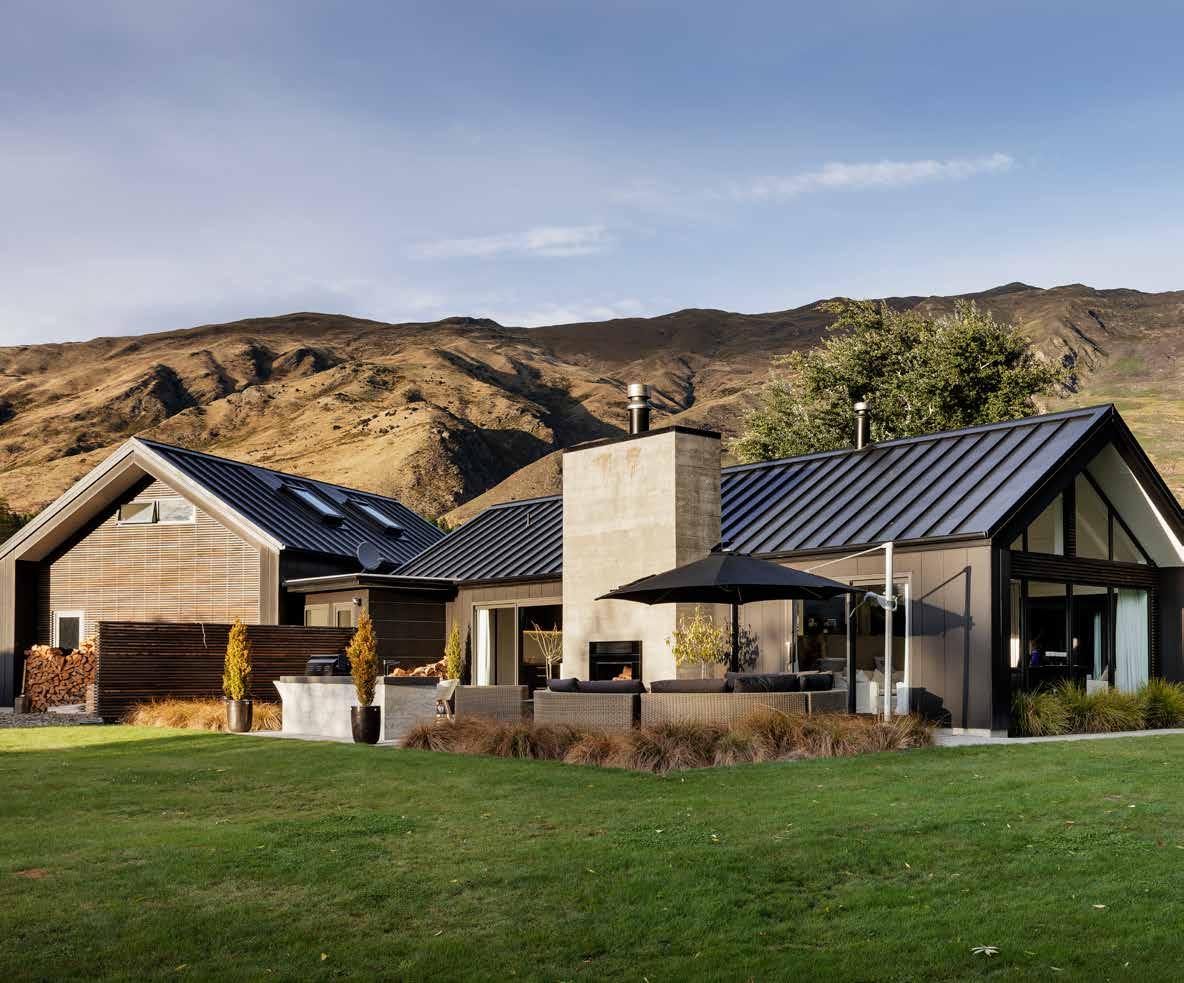
Program: EPD Australasia — www.epd-australasia.com Program Operator: EPD Australasia
EPD Registration Number: S-P-03582
